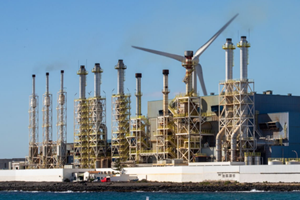Approximately 70% of Earth's surface is covered by water, yet numerous communities face challenges in accessing potable water. The United Nations reports that 2.4 billion people live in water-stressed countries, particularly affecting small-scale farmers who rely on water for various needs. The issue is exacerbated by poor management, misuse, pollution, and climate change, leading to a 20% decrease in freshwater per person over the past two decades. This water scarcity is increasingly causing conflicts globally.
To combat water scarcity, various solutions have emerged, such as enhancing water conservation, adopting water-efficient technologies, implementing sustainable agricultural practices, improving infrastructure, and exploring alternative water sources like desalination.
Nuclear desalination has gained attention as a sustainable solution. Unlike most desalination facilities powered by fossil fuels, nuclear desalination utilizes heat from nuclear power plants for reverse osmosis and distillation. While it holds promise, this approach is currently limited to a small fraction of nuclear power plants in operation.
The advantages of nuclear desalination include providing both electricity and access to potable water. It also offers financial viability, costing less than desalination powered by fossil fuels. However, challenges include establishing efficient coupling methods, preventing radiation leaks, and ensuring economic viability for widespread adoption.
Despite these challenges, ongoing research focuses on improving performance, analyzing design measures, and exploring offshore nuclear desalination. Some experts advocate for placing more facilities offshore, as seen in projects like the USS George Washington assisting the Philippines in 2013 and Saudi Arabia's floating desalination plant in 2022. While offshore plants offer advantages, challenges include water transportation to shore and the need for skilled offshore workforce.
As the demand for freshwater rises and traditional desalination methods face environmental concerns and cost inefficiencies, nuclear desalination emerges as a promising alternative. Efficient coupling methods, robust safety measures, and economic viability are crucial considerations for widespread adoption. Ongoing research and technological developments, along with instances of successful offshore nuclear desalination, indicate a growing global interest in this evolving solution to address the increasing demands for both electricity and fresh water.
By Brett Smith












